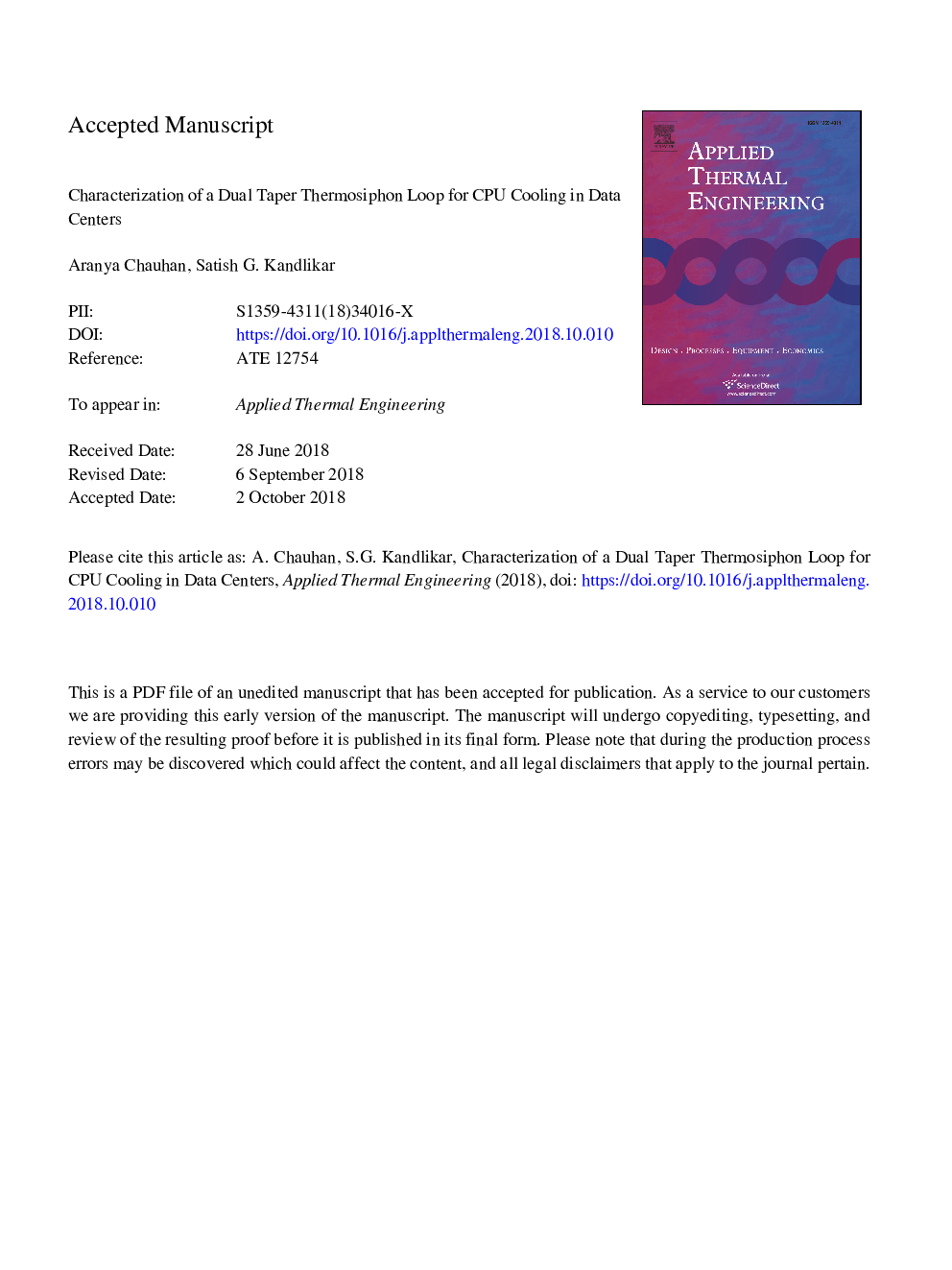| Article ID | Journal | Published Year | Pages | File Type |
|---|---|---|---|---|
| 11020851 | Applied Thermal Engineering | 2019 | 29 Pages |
Abstract
The inefficient cooling processes in data centers consume a large amount of energy making them very expensive. This study is focuses on using a thermosiphon loop as an efficient replacement of currently used air cooling and water cooling techniques for dissipating large heat loads from the CPUs. A symmetric dual taper configuration is introduced in the evaporator to generate a highly efficient and stable two-phase flow in the system using HFE7000. Three different taper angles in the evaporator - 2°, 2.5°, and 3° - are studied, and the respective heat transfer performances are evaluated. The evaporator has 200â¯Âµm square microchannels machined on a 34.5â¯mmâ¯Ãâ¯32â¯mm copper heat sink. Prior to CPU testing, the dual taper evaporator performance is evaluated in a benchtop thermosiphon loop in which the evaporator is heated by electric heaters. The loop is able to dissipate 280â¯W without reaching the critical flux point with a heat transfer coefficient of 26â¯kW/m2 °C. The thermosiphon loop is then tested for cooling a data center server with an i7-930 processor with thermal design power (TDP) of 130â¯W. The cooling performance of the thermosiphon loop is compared with commercial air based and water based coolers in both server and benchtop configurations.
Related Topics
Physical Sciences and Engineering
Chemical Engineering
Fluid Flow and Transfer Processes
Authors
Aranya Chauhan, Satish G. Kandlikar,
